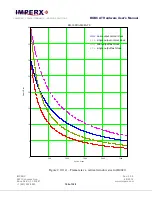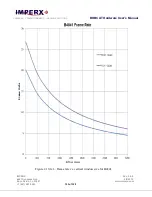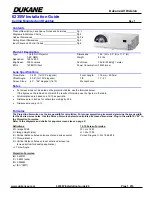
CAMERAS FRAME GRABBERS IMAGING SOLUTIONS
BOBCAT Hardware User’s Manual
IMPERX
Rev. 2.0.9
6421 Congress Ave.
4/8/2014
Boca Raton, FL 33487
www.imperx.com
+1 (561) 989-0006
165 of 329
2.5 EXPOSURE CONTROL
2.5.1 Internal Exposure Control - Electronic Shutter
During normal camera operation, the exposure time is fixed and determined by the
readout (frame) time. The electronic shutter can be used to precisely control the
image exposure time under bright light conditions. The electronic shutter does not
affect the frame rate; it only reduces the amount of electrons collected. Positioning a
short pulse “SHUTTER”, with respect to the vertical transfer pulse, VCCD – Figure
2.12, sets the exposure time. The electronic shutter pulse can be positioned within
the entire frame period with a precision of 1.0us. The maximum exposure is frame
time dependent and the minimum exposure is ~ 2 microseconds (camera dependent).
VCCD
SHUTTER
Frame Time
Exposure
Figure 2.12 – Electronic shutter position
2.5.2 External exposure control
The camera exposure can be controlled using an external pulse, supplied to the
camera. The pulse duration determines the exposure. For stable operation, this pulse
MUST be synchronized with the camera frame timing. Please refer to “I/O Control”
section for pulse mapping information.
2.5.3 Variable Frame Time – Programmable Line and Frame Time
Variable frame time mode provides the ability to run the camera in full resolution
and a frame rate slower than the nominal camera frame. This has two effects: 1) it
reduces the bandwidth requirements on the camera output and 2) it increases the
exposure time for the frame. During normal camera operation (no shutter), the
nominal frame rate determines the integration time. The desired frame rate, and thus
the new integration time, can be achieved by moving the vertical transfer pulse,
VCCD, beyond the normal integration period (the standard frame time) – Figure
2.13. The resultant frame rate can be calculated using formula 2.2. The user can
















































